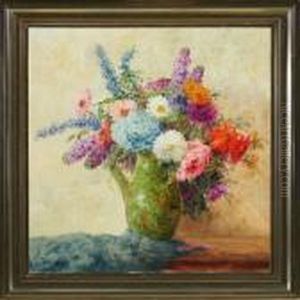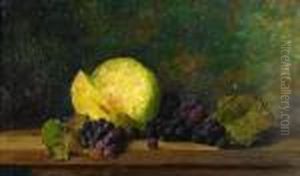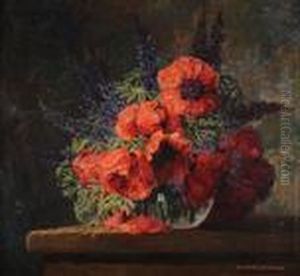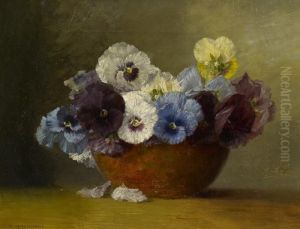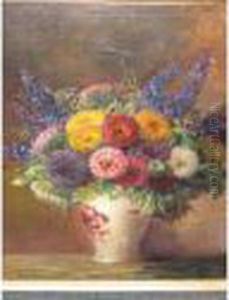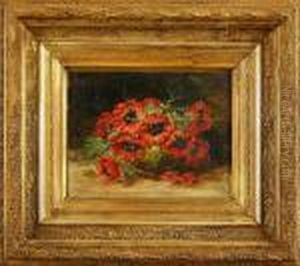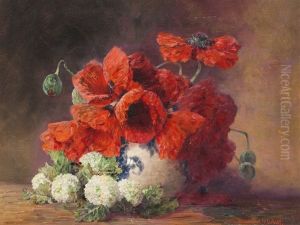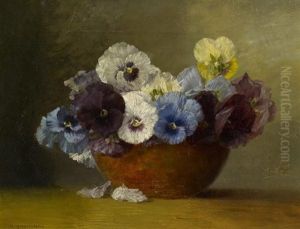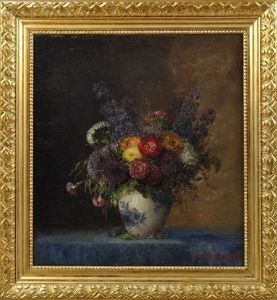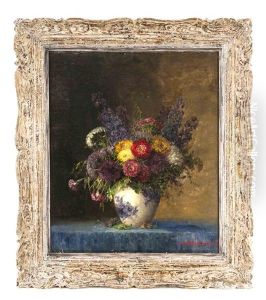Max Theodor Streckenbach Paintings
Max Theodor Streckenbach, often known simply as Max Streckenbach, was a German painter renowned for his floral still lifes. Born on May 17, 1863, in Eckernförde, Germany, Streckenbach showed an early interest in art, but his initial career path was not in the fine arts. He initially took over his father's business; however, he eventually turned to painting as his primary occupation, following his passion for art.
Streckenbach's artistic work is characterized by its detailed and realistic depictions of flowers, which he rendered with a rich palette and a sense of natural beauty. He is often associated with the Jugendstil movement, the German version of Art Nouveau, although his work maintains a distinct personal style that emphasizes the vibrancy and texture of floral subjects. Streckenbach's flowers are not just static still lifes—they seem to brim with life and a subtle energy that captures the viewer's attention.
Throughout his career, Streckenbach enjoyed considerable success and his works were highly sought after. He exhibited his paintings in many shows and his art was collected by numerous art enthusiasts. Despite the popularity of his floral paintings, there is not as much written about his personal life or his artistic journey in comparison to other artists of his time. This is partly due to the fact that Streckenbach preferred to live a quiet life devoted to his art, away from the bustling art scenes of the major cities.
Max Theodor Streckenbach died on October 15, 1936, in his hometown of Eckernförde. His legacy lives on through his beautiful depictions of flowers, which continue to be admired for their technical skill and their ability to capture the essence of the natural world. Streckenbach's contributions to German art are remembered as part of the larger Jugendstil movement, and his paintings can be found in various art collections and museums throughout Germany.


